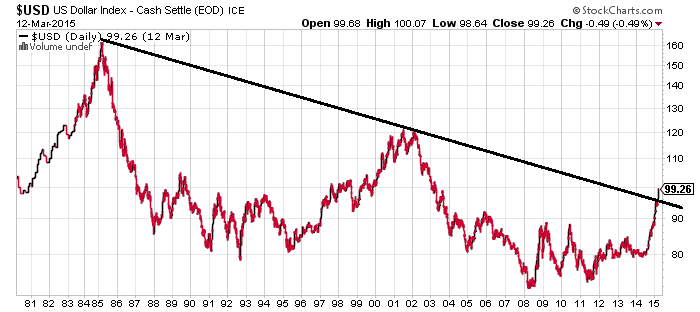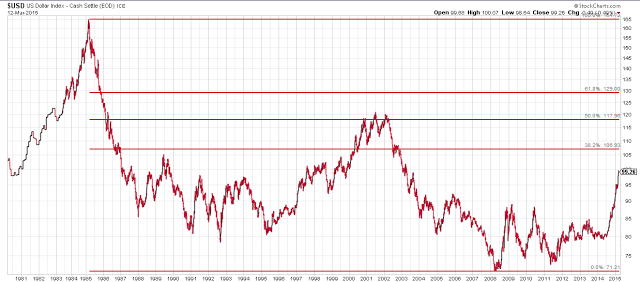Check out the below from Investing in Chinese Stocks:
With the euro trading slightly below $1.05, now’s a good time to look at why that level is the key technical pivot point.
This chart of the euro is from Societe Generale, which goes back to the 1980s. (The euro didn’t exist back then, so a basket of the euro member’s currencies is used instead). The $1.05 level marks the bottom of the long-term uptrend in the common currency. In a separate view, technical trader Tim Knight also identified the $1.05 level as being crucial:
This perfectly matches the downtrend in the U.S. Dollar Index (which is 57.6% euro), a downtrend that was broken in the past week. The USD Index and euro do not experience the same percentage change, but these two charts will continue to move in opposite directions. Either the U.S. dollar has broken out and a huge bull market is on the way, to be confirmed by a further breakdown in the euro, or the spike in the US Dollar Index is a head fake for the moment and the euro is about to bounce.
Here are some possible targets for the US Dollar Index if it breaks out. If the index does a 50% retrace to 118, that would be another 18% gain for the dollar and a drop to about $0.88 on the euro. If the retrace goes to 129, the euro could sink as low as $0.77. A full 100% retrace back to the 1985 would imply a euro trading at $0.44. Instead of being the Deutschmark II, it would become the new incarnation of the lira and drachma.




